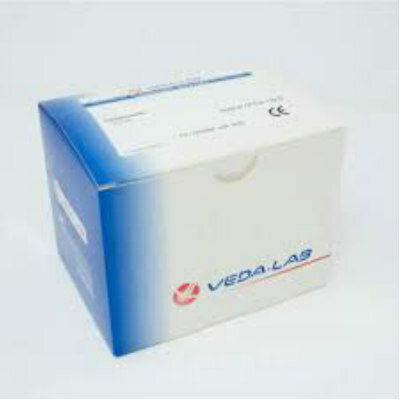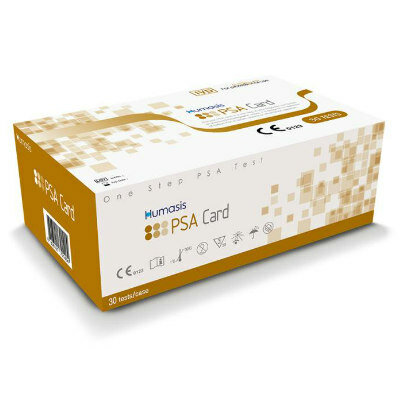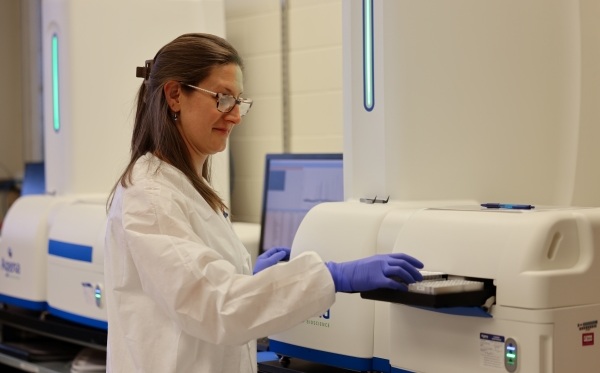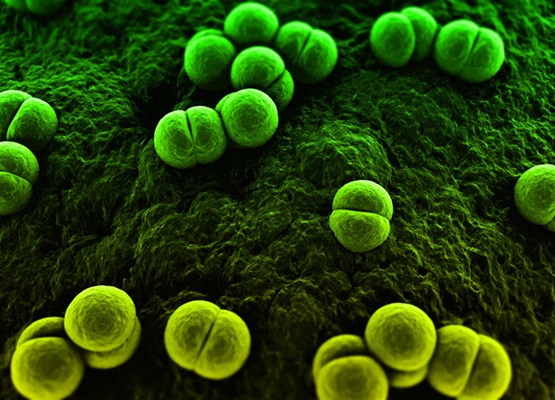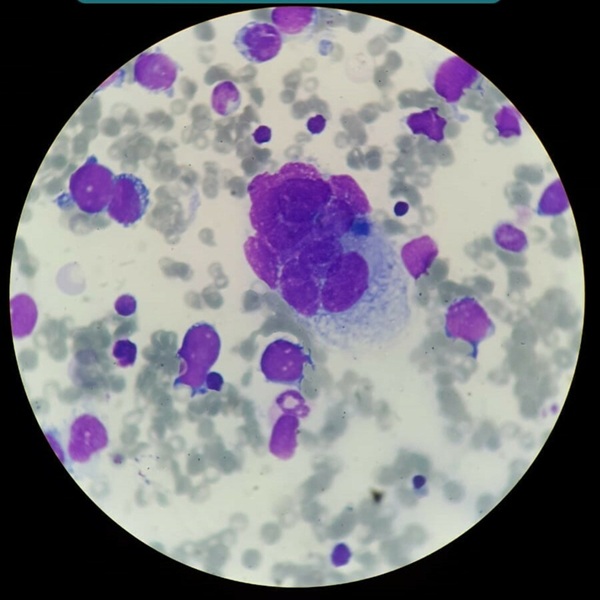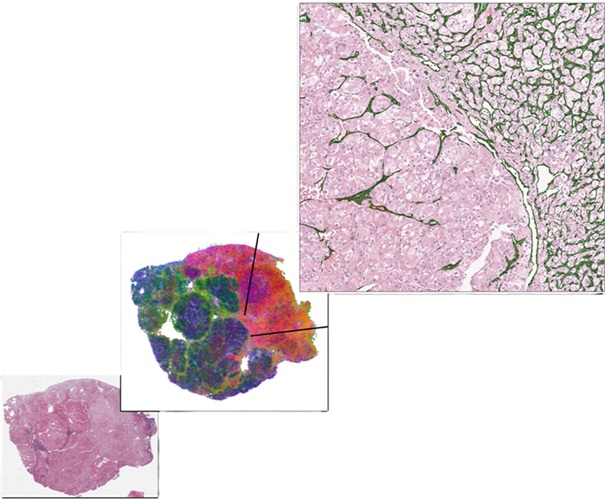Mycobacteria Use Voltage-Dependent Channels to Prevent Destruction
|
By LabMedica International staff writers Posted on 14 Sep 2017 |

Image: A photomicrograph of the pathogenic bacterium Mycobacterium avium (Photo courtesy of Wikimedia Commons).
A team of molecular microbiologists unraveled the mechanism whereby the pathogenic bacterium Mycobacterium avium modifies the environment inside the macrophage phagosome and transforms it from a killing site to place for growth and reproduction.
M. avium is associated with infection of immunocompromised individuals as well as patients with chronic lung disease. This pathogen infects macrophages and actively interferes with the host killing machinery such as apoptosis and autophagy. The bacteria alter the normal endosomal trafficking, prevent the maturation of phagosomes and modify many signaling pathways inside of the macrophage by secreting effector molecules into the cytoplasm.
Phagosomes are vesicles formed around particles engulfed by phagocytes such as macrophages, neutrophils, and dendritic cells. A phagosome is formed by the fusion of the cell membrane around the microorganism. Phagosomes have membrane-bound proteins to recruit and fuse with lysosomes to form mature phagolysosomes. The lysosomes contain hydrolytic enzymes and reactive oxygen species (ROS), which kill and digest the pathogens Many Mycobacteria, including Mycobacterium tuberculosis and Mycobacterium avium, can manipulate the host macrophage to prevent lysosomes from fusing with phagosomes and creating mature phagolysosomes. Such incomplete maturation of the phagosome maintains an environment favorable to the pathogens inside it.
To identify possible phagosomal proteins that were employed by M. avium to export virulence factors into the cytosol of host cells, investigators at Oregon State University (Corvallis, USA) purified vacuole membrane proteins, and their binding to the surface molecules present in intracellular bacteria was evaluated.
The investigators reported in the August 1, 2017, online edition of the journal Scientific Reports that they had identified voltage-dependent anion channels (VDAC) as components of M. avium vacuoles in macrophages. M. avium mmpL4 proteins were found to bind to VDAC-1 protein. The inactivation of VDAC-1 function either by pharmacological means or siRNA (short inhibiting RNA) led to significant decrease of M. avium survival. Although, they could not establish a role of VDAC channels in the transport of known secreted M. avium proteins, the investigators demonstrated that the porin channels were associated with the export of bacterial cell wall lipids outside of vacuole.
"The idea is to find out the mechanism bacteria use to secrete proteins produced in the cells that have important functions in controlling the phagocytic activity that is supposed to kill them," said senior author Dr. Luiz Bermudez, professor of veterinary medicine at Oregon State University. "A VDAC is very small, but it can become larger if several VDAC proteins get together through polymerization. We found that yes, mycobacteria use surface proteins to bind to the VDAC. But although we tried to see if the proteins of the mycobacterium were exported by the VDAC, we could not show that. However, we did show that another component of the cell wall of the mycobacterium, lipids, are exported by that mechanism."
Related Links:
Oregon State University
M. avium is associated with infection of immunocompromised individuals as well as patients with chronic lung disease. This pathogen infects macrophages and actively interferes with the host killing machinery such as apoptosis and autophagy. The bacteria alter the normal endosomal trafficking, prevent the maturation of phagosomes and modify many signaling pathways inside of the macrophage by secreting effector molecules into the cytoplasm.
Phagosomes are vesicles formed around particles engulfed by phagocytes such as macrophages, neutrophils, and dendritic cells. A phagosome is formed by the fusion of the cell membrane around the microorganism. Phagosomes have membrane-bound proteins to recruit and fuse with lysosomes to form mature phagolysosomes. The lysosomes contain hydrolytic enzymes and reactive oxygen species (ROS), which kill and digest the pathogens Many Mycobacteria, including Mycobacterium tuberculosis and Mycobacterium avium, can manipulate the host macrophage to prevent lysosomes from fusing with phagosomes and creating mature phagolysosomes. Such incomplete maturation of the phagosome maintains an environment favorable to the pathogens inside it.
To identify possible phagosomal proteins that were employed by M. avium to export virulence factors into the cytosol of host cells, investigators at Oregon State University (Corvallis, USA) purified vacuole membrane proteins, and their binding to the surface molecules present in intracellular bacteria was evaluated.
The investigators reported in the August 1, 2017, online edition of the journal Scientific Reports that they had identified voltage-dependent anion channels (VDAC) as components of M. avium vacuoles in macrophages. M. avium mmpL4 proteins were found to bind to VDAC-1 protein. The inactivation of VDAC-1 function either by pharmacological means or siRNA (short inhibiting RNA) led to significant decrease of M. avium survival. Although, they could not establish a role of VDAC channels in the transport of known secreted M. avium proteins, the investigators demonstrated that the porin channels were associated with the export of bacterial cell wall lipids outside of vacuole.
"The idea is to find out the mechanism bacteria use to secrete proteins produced in the cells that have important functions in controlling the phagocytic activity that is supposed to kill them," said senior author Dr. Luiz Bermudez, professor of veterinary medicine at Oregon State University. "A VDAC is very small, but it can become larger if several VDAC proteins get together through polymerization. We found that yes, mycobacteria use surface proteins to bind to the VDAC. But although we tried to see if the proteins of the mycobacterium were exported by the VDAC, we could not show that. However, we did show that another component of the cell wall of the mycobacterium, lipids, are exported by that mechanism."
Related Links:
Oregon State University
Latest BioResearch News
- Genome Analysis Predicts Likelihood of Neurodisability in Oxygen-Deprived Newborns
- Gene Panel Predicts Disease Progession for Patients with B-cell Lymphoma
- New Method Simplifies Preparation of Tumor Genomic DNA Libraries
- New Tool Developed for Diagnosis of Chronic HBV Infection
- Panel of Genetic Loci Accurately Predicts Risk of Developing Gout
- Disrupted TGFB Signaling Linked to Increased Cancer-Related Bacteria
- Gene Fusion Protein Proposed as Prostate Cancer Biomarker
- NIV Test to Diagnose and Monitor Vascular Complications in Diabetes
- Semen Exosome MicroRNA Proves Biomarker for Prostate Cancer
- Genetic Loci Link Plasma Lipid Levels to CVD Risk
- Newly Identified Gene Network Aids in Early Diagnosis of Autism Spectrum Disorder
- Link Confirmed between Living in Poverty and Developing Diseases
- Genomic Study Identifies Kidney Disease Loci in Type I Diabetes Patients
- Liquid Biopsy More Effective for Analyzing Tumor Drug Resistance Mutations
- New Liquid Biopsy Assay Reveals Host-Pathogen Interactions
- Method Developed for Enriching Trophoblast Population in Samples
Channels
Clinical Chemistry
view channel
AI-Powered Blood Test Accurately Detects Ovarian Cancer
Ovarian cancer ranks as the fifth leading cause of cancer-related deaths in women, largely due to late-stage diagnoses. Although over 90% of women exhibit symptoms in Stage I, only 20% are diagnosed in... Read more
Automated Decentralized cfDNA NGS Assay Identifies Alterations in Advanced Solid Tumors
Current circulating cell-free DNA (cfDNA) assays are typically centralized, requiring specialized handling and transportation of samples. Introducing a flexible, decentralized sequencing system at the... Read more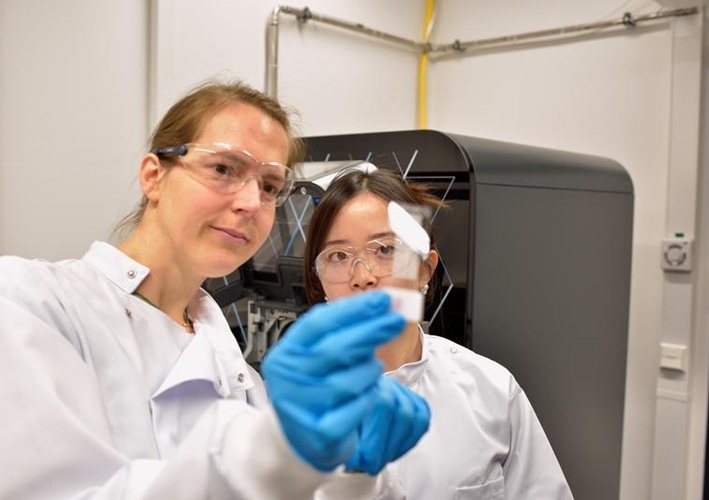
Mass Spectrometry Detects Bacteria Without Time-Consuming Isolation and Multiplication
Speed and accuracy are essential when diagnosing diseases. Traditionally, diagnosing bacterial infections involves the labor-intensive process of isolating pathogens and cultivating bacterial cultures,... Read more
First Comprehensive Syphilis Test to Definitively Diagnose Active Infection In 10 Minutes
In the United States, syphilis cases have surged by nearly 80% from 2018 to 2023, with 209,253 cases recorded in the most recent year of data. Syphilis, which can be transmitted sexually or from mother... Read moreMolecular Diagnostics
view channel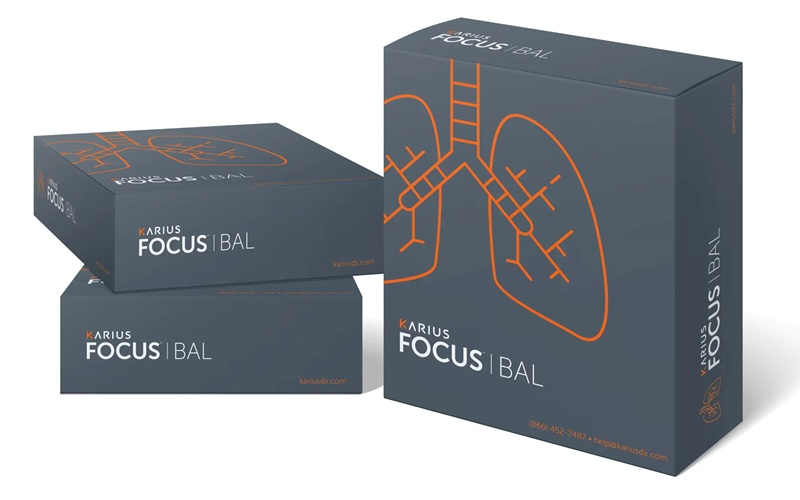
Microbial Cell-Free DNA Test Accurately Identifies Pathogens Causing Pneumonia and Other Lung Infections
Bronchoalveolar lavage (BAL) is a commonly used procedure for diagnosing lung infections, especially in immunocompromised patients. However, standard tests often fail to pinpoint the exact pathogen, leading... Read more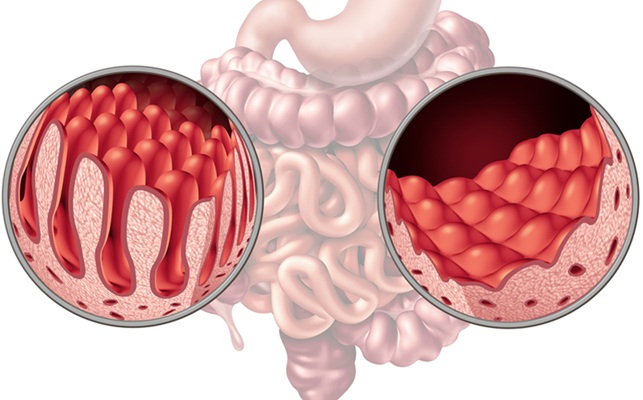
Non-Biopsy Approach to Transform Adult Celiac Disease Diagnoses
In the United States, the diagnosis of celiac disease in adults typically relies on a combination of serologic testing and a confirmatory small bowel biopsy during upper endoscopy. In contrast, European... Read moreHematology
view channel
First Point-of-Care Heparin Monitoring Test Provides Results in Under 15 Minutes
Heparin dosing requires careful management to avoid both bleeding and clotting complications. In high-risk situations like extracorporeal membrane oxygenation (ECMO), mortality rates can reach about 50%,... Read more
New Scoring System Predicts Risk of Developing Cancer from Common Blood Disorder
Clonal cytopenia of undetermined significance (CCUS) is a blood disorder commonly found in older adults, characterized by mutations in blood cells and a low blood count, but without any obvious cause or... Read moreImmunology
view channel
Stem Cell Test Predicts Treatment Outcome for Patients with Platinum-Resistant Ovarian Cancer
Epithelial ovarian cancer frequently responds to chemotherapy initially, but eventually, the tumor develops resistance to the therapy, leading to regrowth. This resistance is partially due to the activation... Read more
Machine Learning-Enabled Blood Test Predicts Immunotherapy Response in Lymphoma Patients
Chimeric antigen receptor (CAR) T-cell therapy has emerged as one of the most promising recent developments in the treatment of blood cancers. However, over half of non-Hodgkin lymphoma (NHL) patients... Read moreMicrobiology
view channel
New Blood Test Detects Up to Five Infectious Diseases at POC
Researchers have developed a prototype flow-through assay capable of detecting up to five different infections, with results that can be quickly analyzed and transmitted via a specialized smartphone app.... Read more
Molecular Stool Test Shows Potential for Diagnosing TB in Adults with HIV
Tuberculosis (TB), caused by the bacterium Mycobacterium tuberculosis, led to 1.25 million deaths in 2023, with 13% of those occurring in people living with HIV. The current primary diagnostic method for... Read morePathology
view channel
Groundbreaking Chest Pain Triage Algorithm to Transform Cardiac Care
Cardiovascular disease is responsible for a third of all deaths worldwide, and chest pain is the second most common reason for emergency department (ED) visits. With EDs often being some of the busiest... Read more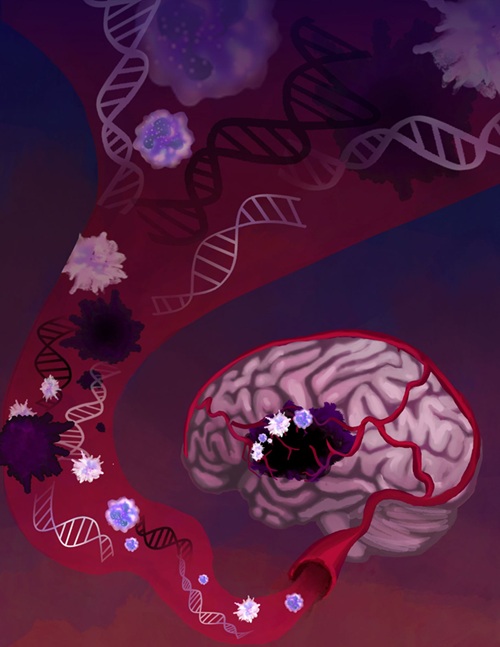
AI-Based Liquid Biopsy Approach to Revolutionize Brain Cancer Detection
Detecting brain cancers remains extremely challenging, with many patients only receiving a diagnosis at later stages after symptoms like headaches, seizures, or cognitive issues appear. Late-stage diagnoses... Read moreTechnology
view channel
Advanced Predictive Algorithms Identify Patients Having Undiagnosed Cancer
Two newly developed advanced predictive algorithms leverage a person’s health conditions and basic blood test results to accurately predict the likelihood of having an undiagnosed cancer, including ch... Read more
Light Signature Algorithm to Enable Faster and More Precise Medical Diagnoses
Every material or molecule interacts with light in a unique way, creating a distinct pattern, much like a fingerprint. Optical spectroscopy, which involves shining a laser on a material and observing how... Read more
Disposable Microchip Technology Could Selectively Detect HIV in Whole Blood Samples
As of the end of 2023, approximately 40 million people globally were living with HIV, and around 630,000 individuals died from AIDS-related illnesses that same year. Despite a substantial decline in deaths... Read more
Pain-On-A-Chip Microfluidic Device Determines Types of Chronic Pain from Blood Samples
Chronic pain is a widespread condition that remains difficult to manage, and existing clinical methods for its treatment rely largely on self-reporting, which can be subjective and especially problematic... Read moreIndustry
view channel
Cepheid and Oxford Nanopore Technologies Partner on Advancing Automated Sequencing-Based Solutions
Cepheid (Sunnyvale, CA, USA), a leading molecular diagnostics company, and Oxford Nanopore Technologies (Oxford, UK), the company behind a new generation of sequencing-based molecular analysis technologies,... Read more
Grifols and Tecan’s IBL Collaborate on Advanced Biomarker Panels
Grifols (Barcelona, Spain), one of the world’s leading producers of plasma-derived medicines and innovative diagnostic solutions, is expanding its offer in clinical diagnostics through a strategic partnership... Read more




